Karl Ingar Røys latest work Burmese Days (2014) looks at cultural production in Yangon – Burma’s former capital – and how it has managed to co-exist within the political regime.
How did you come to make a film in Yangon?
The trigger was George Orwell, who served as a police officer with the British colonial authorities in Burma for five years, under his real name, Eric Arthur Blair.
The initial idea of making a project in Yangon came from an article I read in a magazine about the Knowledge Exchange Movement, an underground activist publishing agency in Yangon that copied and redistributed political literature to encourage Burmese citizens to think more critically about the society they lived in. Part of their project was to reprint an old, rare copy of George Orwell’s Animal Farm in a Burmese translation. As the government at that time censored all publications they had to work in total secrecy and copy the book in copy-shops away from any prying eyes, not so unlike the setting of Orwell’s Nineteen Eighty-Four.
The original printing of the Burmese version of Animal Farm was funded by the United States and distributed as anti-socialist propaganda in the 1950s, during the short, chaotic period before the military coup. But the young intellectuals of the time did not warm to it at all, so it didn’t have as much impact as the US probably wished for. It is a kind of historical irony that owning an Orwell book just a few decades later was actually used as evidence that the owner was a Communist.
I also read that in Burma many intellectuals looked upon Orwell almost like a prophet, in reference to his Burmese Trilogy. His debut novel Burmese Days describing Burma’s colonial past, Animal Farm’s focus on the military’s failure during the revolution and of course the dystopian Nineteen Eighty-Four, which they said was an accurate description of their suppressed life in Burma.
Further on, it is also said that the democratic movement, the 88 Generation, which was the prime target of Burma’s regime and its Ministry of Truth, was inspired by Orwell too. In the 1988 uprising the military massacred thousands of 88-Generation members and Aung San Suu Kyi was sentenced to a fifteen-year long house arrest. In 1989, a year after the massacre, a spokesman for the regime uttered the following message on behalf of the government: ‘Truth is the only truth within a certain time. What was once true, need not be true a few months or years later’. In Orwell’s Nineteen Eighty-Four, the ruling party had the slogan: ‘He who controls the past controls the future. He who controls the present controls the past.’
These overlapping connections between reality and Orwellianity motivated me to research the political – and its gestures in contemporary Burmese artistic production, the possibilities for cultural activism.
Could you tell me how you met the artists in your film Burmese Days?
I always do a lot of research before I get to the stage where I actually shoot the film. The purpose is to have a big pool of ideas and facts that I can use later if I need to, as filming guerilla style, as I do, can sometimes result in the unexpected, and I need to be prepared for that. I have done this for some time now, so I am getting better at improvising and seeing the potential in a suddenly evolving context. During my research I try to gather as much background information on the place, people and the political context I am working in as I can. I read the available literature, guides, reports, newspapers, statistics, watch films, talk to people, contact organisations and institutions that work with issues that I am interested in.
In the early stages of the preparation for Burmese Days I contacted Audun Agre at the Norwegian Burma Committee in Oslo who very generously gave me a long list of contacts in Burma. One of them was the writer and journalist Ma Thida who in turn put me in contact with the hip-hop scene and J-me. Via the Berlin-based filmmaker Lindsey Merrison, who initiated the Yangon Film School, we came into contact with the local filmmaker So Moe Aung who assisted us with the translation and getting in contact with San Zaw Htway. I had a certain idea of who I was interested in getting in touch with before I travelled to Yangon, but I was also open to the idea of meeting people just by chance, as we did with the street-sweeper Maung Oo who just happened to be working that night we filmed. All in all, the artists and musicians we filmed in Burmese Days, were people that we either met via others or as a result of our research. We met up several times with the punk vocalist Skum and Eaid Dhi, who plays the guitar in my film, to talk and to listen to them play and record music. At the time, it was almost impossible for them to do gigs publicly so most of the time they were instead trying out new material in the recording studio.
Why did you portray them in the manner you did? The juxtaposition works beautifully.
In Burmese Days, I wanted to present different kinds of cultural, artistic expression that seek to challenge and invite the spectator to add something of themselves. By juxtaposing the scene of Htway memorising the rubbish material he used for his artworks with footage of the street-sweeper Maung Oo at work, where he goes through rubbish to salvage the parts that he can recirculate, I wanted to highlight the potential of people, the potential of rubbish and of things that we normally disregard, as they don’t concern us directly, maybe like conflicts and problems in faraway places. The content for me was more important than the form. That is also the reason why I invited the punk singer Skum to recite his lyrics from his song Urban Rubbish in the actual backstreets of Yangon. I wanted to highlight the serious and highly relevant content of his text that maybe gets lost for some people because they have negative preconceptions about this type of music. This approach is a vital part of my work, finding new angles on a context, as with the documentary filmmaker Min Htin Ko Ko Gyi who does not show us his documentary film, but instead tells us about the essence and the heart of his film. My purpose was to open up a different way to interpret the personal and the political in a cultural expression. By deconstructing and reconstructing expressions I wanted to reveal how meaning and truth are constructed layer by layer, just as the hip-hop singer J-Me creates his songs in the studio.
Did the film develop over time or did you have a clear picture of the outcome from the start?
If I can, I like to leave the footage just after I have filmed it, to mature the material a bit. As I am doing the shooting and the editing myself, it’s good to leave it for a while, work on another project and then look at it again with fresh eyes. Sometimes I see things then that I missed the first time. The film was actually finished just the night before the preview. I like the intensity of working in such a focused way just before the opening of the exhibition, it creates a certain energy that I can also see in the work afterwards. It also helps me to better combine the work with where it will be presented, to introduce the work to the space gradually.
Why is the work presented on two screens simultaneously? Did the presentation of the film respond to the setting of the John Jones Project Space?
In the beginning, before I saw the space at John Jones I was testing out different ways of presenting the film with multiple simultaneous screens, but after experiencing the space myself, it was clear that it had to be a dual projection, straight onto the concrete. It suited the mood and the content of the film.
Burmese Days has many layers that maybe will not be so clear at first sight. Like a poem, in this work I was inspired by the rich imagery and poetry of Burmese art. The sequence where I illustrate and tell the story about the moon and the rabbit has many meanings; it relates to Htway and the pictures he made in prison and how I interpreted them. Also, as an image of Aung San Suu Kyi’s self sacrifice in what she had to go through during her time fighting for freedom and progress in Burma. Not being able to leave the country to see her children or to see and care for her dying husband. In the original story the rabbit was a he, I changed it to a she to underline that. The story was also meant as an allegory on how mythology and artistic expressions can define and shape our past and future. Other than that, the typewriter in the film was also meant as an Orwellian nod, as was the use of multiple cameras – linking surveillance and Orwell writing about Big Brother’s all-controlling eye. The choice to present the videos on two walls simultaneously was based on the same principles and to emphasise the dualistic choice of point of view. I wanted to open up the story, the interpretation and in that way to activate the viewer.
Could you tell me about the soundtrack? You worked with Matthias Kispert, an Austrian composer I believe? The sound of the typewriter is particularly evocative.
I have a lot of respect for the importance of sound and what it adds to the imagery, so I think it is better that the sound artist himself, Matthias Kispert answers below:
What the sound track does, or at least what it’s trying to do at times, is to subtly modify the position of the viewer in relation to the image. For example, in the first scene we see a woman typing on a typewriter. The image mixes different temporalities; with the typewriter being almost obsolete technology, yet the woman is writing a letter about what she will be doing the following day. At this point the sound appears to be coming from within the machine that the camera is observing from without, reversing the perspective of the viewer.
When the rapper J-Me lays down some lyrics for a new track, the sound switches first to the backing track played through speakers in the control room, then to J-Me’s unaccompanied voice, and finally to the track heard through headphones in the recording booth. This shows the way a music recording is constructed and mirrors the construction of the documentary narrative with different interpretative interventions in the moments of framing, editing, and finally viewing.
In the scene before Skum appears for the first time to recite the lyrics to his song: Urban Rubbish, the camera drifts across different views of Yangon’s streets at night. Here I have mixed recordings of street atmospheres from Yangon with the sound of electromagnetic radiations that are emitted by technology like fluorescent tubes or flat-screen displays in the urban space. They cannot be heard with the naked ear, but there is a very cheap way of recording their audio spectrum. By way of analogy, this creates a kind of crossing between what is visible and what is not.
Matthias Kispert, September 2014
Could you say anything about the artists you introduce us to in your film? It was wonderful that you shared the stage with the Burmese artist San Zaw Htway, who features in your film and was the winner of this year’s Art Raker Award, during your talk at John Jones Project Space.
The artist San Zaw Htway is a former student at the University of Yangon who was arrested and sentenced to thirty-six years imprisonment by the military government for involvement in a student protest. Htway began to create collage art from pieces of rubbish to cope with his solitary confinement and poor living conditions in Taungyi Prison and after twelve years in prison, he was released following a presidential amnesty. His work and engagement is important, strong and beautiful and I am very glad and grateful that he could join us at the talk.
Min Htin Ko Ko Gyi is an independent filmmaker and poet living and working in Yangon. His award-winning documentary Floating Tomatoes, which he talks about in my film, is about the disastrous effect that pesticides are having on Myanmar's Inle Lake. He is also the organiser of The Art of Freedom Film Festival Burma and also organises film screenings in rural areas of Burma as a way to educate people. His film is a good example of how cultural activism can directly change things. After watching his film, the Norwegian and the US Government decided to donate enough funds to clean up Inle Lake.
Skum is a punk singer in the band Kultureshock and he is a former student of English Literature at Yangon University of Foreign Languages. Before his final year exams, the police arrested him for antisocial behavior and he was given a twelve-year sentence. He served six years, three in the notorious Inseine Prison and the rest in a labour camp. Before I left Yangon he translated and gave me his lyrics for the song Religious Massacre – a response to the brutal persecutions of ethnic and religious minorities in Burma.
Religious Massacre: Lyrics by Skum
The silence, the corpses of racial hatred scattered. In the darkness, the innocent victims crying. Raping humanity, the new age of terror. Blinded by faith, fuelled by anger
The religious massacre. The religious massacre
The genocides, provoked by misunderstanding and rage. All the hopeless people in the third world country. Raping humanity, the new age of terror. Blinded by faith, fuelled by anger
The religious massacre. The religious massacre.
I understand you are returning to Yangon next year? What will you be working on this time?
I will do some interviews in relation to my research on Cultural Activism and Civil Society that I am working on at the University of Bergen.
Do your previous studies in Law have an influence on your art practice? And does your current study of Comparative Politics feed into your work? Is there a relationship between your academic life and your artistic practice?
Yes, for sure, there are many interlinking factors that have been essential in many of my artworks. I think it has helped me in grounding my work in many ways and also I feel quite relaxed negotiating with state institutions as I have a certain familiarity with the sets of rules they are governed by. It gives me a better overview, and maybe another angle that can enrich and transport my work in a different way.
Do you believe, in the words of Boris Groys, in the ‘ability of art to function as an arena and medium for political protest and social activism’?
I think artists can play an important role, maybe not only to directly change something, but also to open up and create spaces for discussion. I have seen many examples where a gallery, an artspace, is an essential and unique place that can attract people that normally do not discuss political issues in societies that suppress freedom of speech. It is a space of possibilities and interpretation – that triggers something.
Ali MacGilp
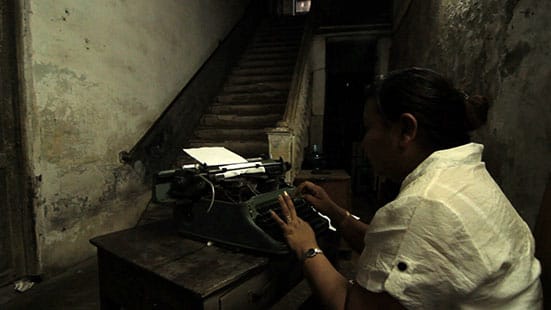
Karl Ingar Røys
Burmese Days
2014
Two-channel video installation
17 minutes, with sound
Courtesy the artist
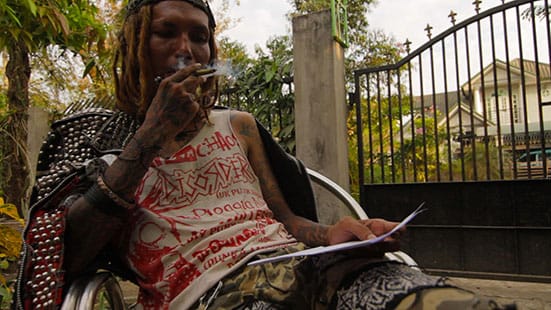
Karl Ingar Røys
Burmese Days
2014
Two-channel video installation
17 minutes, with sound
Courtesy the artist
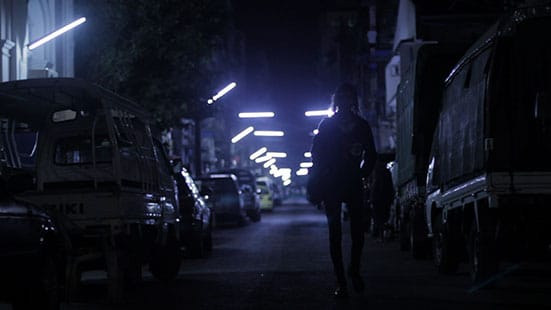
Karl Ingar Røys
Burmese Days
2014
Two-channel video installation
17 minutes, with sound
Courtesy the artist
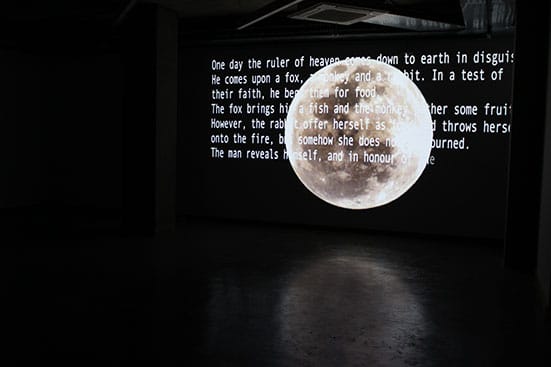
Karl Ingar Røys
Burmese Days
2014
Two-channel video installation
17 minutes, with sound
Courtesy the artist
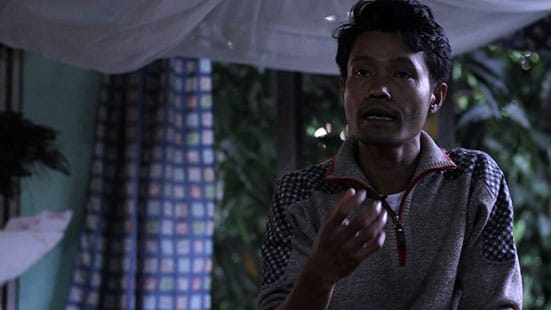
Karl Ingar Røys
Burmese Days
2014
Two-channel video installation
17 minutes, with sound
Courtesy the artist
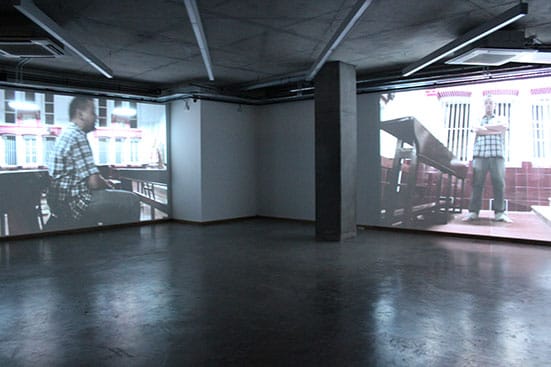
Karl Ingar Røys
Burmese Days
2014
Two-channel video installation
17 minutes, with sound
Courtesy the artist
Installation View at John Jones Project Space